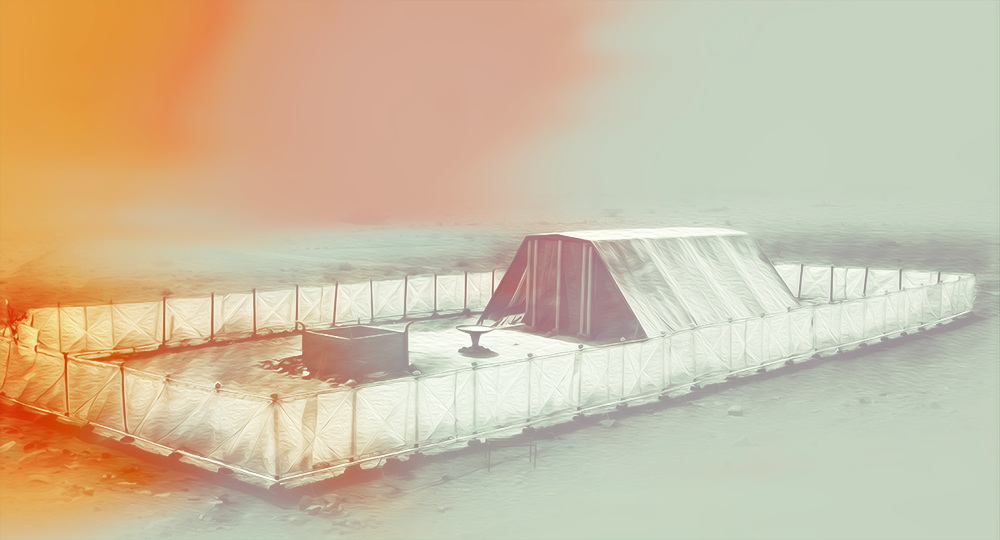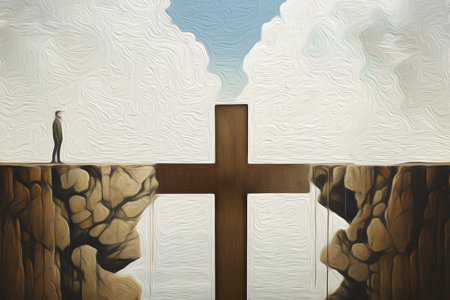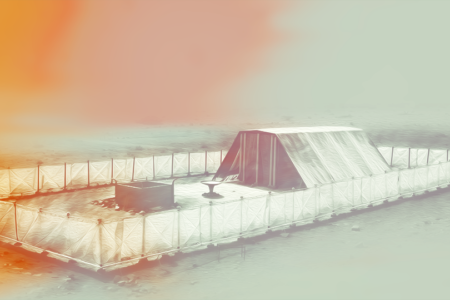God’s Holy Mishkan
Why people need to understand the importance of Israel’s Tabernacle
God’s revelation concerning the Israelites’ Tabernacle covers 50 chapters in the Old Testament, while His revelation about the creation of the world covers fewer than two. The amount of space Scripture devotes to the Tabernacle reveals the importance God placed on it and its ministries.
Consequently, if we want to understand God’s redemptive program for Israel and mankind, we must study the Tabernacle (Hebrew, mishkan).
God revealed to Moses every detail of the Tabernacle’s design and function. Nothing was speculation. The structure originated with God, who revealed its blueprint and delivered it to Moses on Mount Sinai (Ex. 25:9, 40; 26:30; 40:16–33; Heb. 8:5).
The Tabernacle showed a sinful people how they could come before a holy God in worship and service and offer sacrifices for sin through a mediating priesthood (Lev. 1—7; 16—17). For hundreds of years, the Tabernacle served as a place for God to dwell among His people and for His people to commune with Him through a chosen priesthood and a blood sacrifice.
The Pattern
The Mishkan was the focal point of Israel’s community and life, with the 12 tribes dwelling around its four sides (Num. 2). It is estimated that the encampment extended for 12 square miles.
The Tabernacle’s outer court was 150 feet long and 75 feet wide, enclosed by a fine twine linen curtain 7.5 feet high. Entrance into the courtyard was through a 30-foot gate on the east side.
The brazen altar (Ex. 40:6) stood in the outer court just inside the gate, facing the Tabernacle. The brazen laver stood between the brazen altar and the Tabernacle and was for the priests, who had to wash before entering the holy place.
The Tabernacle itself was 15 feet wide, 45 feet long, and 15 feet high and was divided into two sections: the holy place (15 feet wide and 30 feet long) and the holy of holies (15 feet square).
The holy place contained three pieces of furniture: the table of showbread on the right; the seven-branched golden lampstand on the left; and the altar of incense, which stood in front of the veil into the holy of holies. The heavy veil hung between the holy place and the holy of holies, separating a holy God from the sinful priest whose duty was to minister in the Tabernacle.
Inside the holy of holies sat the Ark of the Covenant, a rectangular box covered with gold inside and out. On top stood two gold cherubim, facing each other but looking down toward the mercy seat, their wings outstretched over it. On the Day of Atonement, the high priest entered the holy of holies through the veil and sprinkled blood on the mercy seat, making atonement for himself and all of Israel (Lev. 16—17).
The Tabernacle, along with its regulations, was designed to be “symbolic [literally, a parable] for the present time” (Heb. 9:9). The Tabernacle’s ordered service, mediated through the Levitical priesthood, was an object lesson in which the Holy Spirit taught the true realities of God to Israel. The Mishkan also foreshadowed three basic truths:
1. God revealed Himself to humanity and desires worship.
2. People are sinful creatures who cannot approach a holy God on their own terms or merit.
3. Approaching God can only be done through a God-appointed means; that is, a high priest who must offer a perfect, God-ordained sacrifice for an atonement (covering) for man’s sins.
The Purpose
After Adam and Eve sinned in the Garden of Eden, their eyes were opened; and they knew they were naked. Feeling their guilt and nakedness, they sewed fig leaves together to cover themselves (Gen. 3:7).
Their fall resulted in Jehovah God killing animals to provide coats of skins for them (v. 21). This action constituted the first blood atonement for sin and was performed by God Himself.
Notice, God covered their shame in a way that involved blood and death.
In the Law, God gave Moses an elaborate system of sacrifices to atone for sin: “For the life of the flesh is in the blood, and I have given it to you upon the altar to make atonement for your souls; for it is the blood that makes atonement for the soul” (Lev. 17:11). Blood makes life possible and sustains it. Without blood, no human or animal could live. And it is precisely that blood, or life, that God requires as an atonement.
When an animal’s blood was shed, the animal died; and its life became a substitute for the life of the person offering the sacrifice. Thus, the sinless animal’s death allowed the human sinner to live. The writer of Hebrews said, “According to the law almost all things are purified with blood, and without shedding of blood there is no remission [forgiveness of sin]” (9:22).
Leviticus 1—7 records five offerings and their application. All but one required the shedding of animal blood. Details on how these offerings were to be handled are so specific that there was no room for imagination, additions, subtractions, or interpretations. The most prominent features of these offerings (except for the meal offering) were the death of an animal and the shedding and sprinkling of its blood.
These offerings were to be performed with an attitude of worship and obedience, as God demanded, so an Israelite’s sin could be covered.
The Temporary Provision
The Mosaic Law, with its priesthood and sacrifices, although extremely specific, was merely a shadow, or outline, of things to come. It did not provide a true, detailed picture of the sacrifice God would provide through Jesus the Messiah.
The multitude of sacrifices, offered year after year, could never make the Israelites perfect or righteous before God. If they had, the people “would have had no more consciousness [condemnation] of sins” (Heb. 10:2). Rather, the repetitiveness actually proved the sacrifices’ inability to cleanse from sin. “For it is not possible that the blood of bulls and goats could take away sins” (v. 4). It could only cover sin temporarily.
Nevertheless, God established the elaborate sacrificial system for several reasons:
→ To make the Israelites acknowledge their need for atonement before Him (Lev. 17:11).
→ To make the Israelites admit they could not atone for their own sins. Sacrifices were vicarious, substitutionary expiations for sins that were symbolically transferred to animals to make atonement and satisfy God’s wrath.
→ To enable people to have their sins covered before approaching God in worship.
→ To point to the day when Israel’s Messiah would provide a once-for-all atonement for sin. The Son of God came into the world to mediate a New Covenant through the sacrifice of Himself (cf. Jn. 10:15–18).
The Overriding Truth
It was never God the Father’s will for animal sacrifices to remove sin. He had foreordained “before the foundation of the world” that His Son would come into the world as “a lamb without blemish and without spot” to remove sin through His death (1 Pet. 1:19–20).
Jesus was willing to do the Father’s will to become a sacrifice for you and me so that we could live eternally with God. God ended animal sacrifices and established Jesus’ sacrifice for sin once and for all (Heb. 10:1–18).
Through the Tabernacle, God revealed Himself to humankind and told us how to approach and worship Him. We are sinful, fallen creatures and dare not approach a holy God on our own terms. God has shown us that we need a sacrifice and a priest in order to enter His holy presence.
In Messiah Jesus, we have the great High Priest who offered Himself as a perfect sacrifice, thus fulfilling God’s ultimate plan and purpose, obtaining eternal redemption, and opening access to God for all who put faith and trust in Him for salvation.
Have you put your faith in Jesus? With the Israelites’ Mishkan, God provided a specific way to approach Him: His way. And His way now is through the Messiah of Israel. Jesus said, “The one who comes to Me I will by no means cast out” (Jn. 6:37). Why not come today?
Photo: RUK7/Wikimedia Commons (CC BY-SA 3.0)








